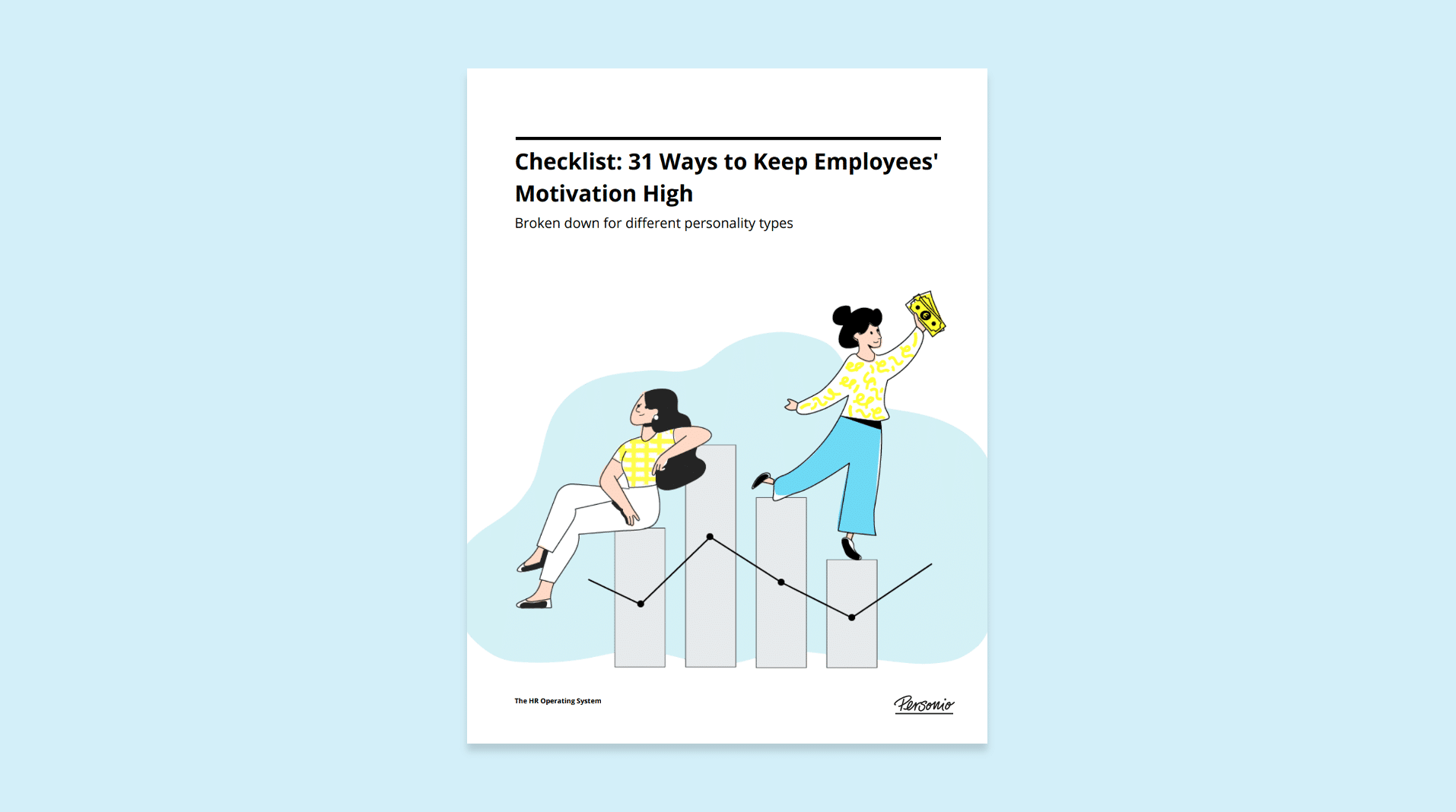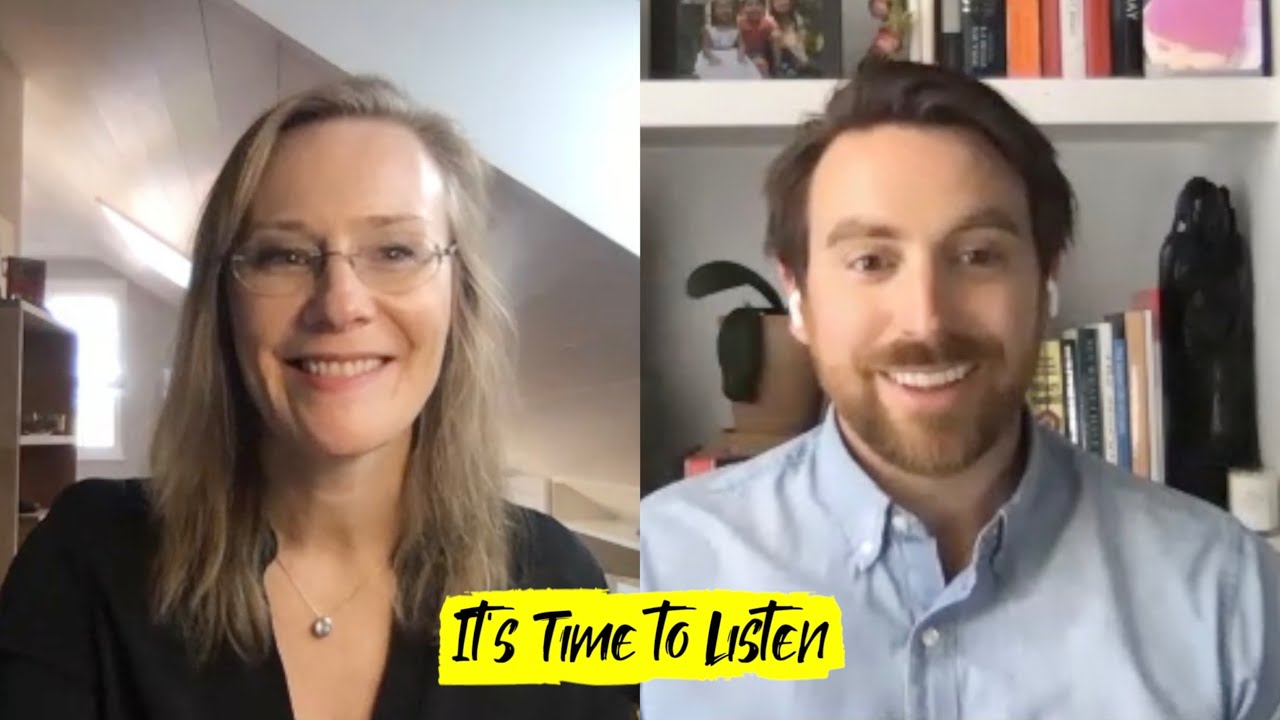21. August 2020
How to Measure and Improve Employee Performance and Engagement in Tough Times

What, if anything, are companies doing differently with employee engagement surveys and performance management during COVID-19? Personio's Head of Brand, Laura Schroeder, spoke with Nick Matthews, VP and GM of Culture Amp, the people & culture platform about how companies are adapting their employee engagement and performance strategies during the Coronavirus crisis.
Matthews leads the $12 million+ EMEA business for Culture Amp, where he is accountable for revenue, customer retention and 50 staff across the region so he is uniquely placed to see how employee surveys are helping companies – from AirBnB to Slack and even Oracle – to collect, understand, and act on employee feedback in tough times. These are the questions that Laura asked him, and his tips for companies who want to keep employee engagement high.
You need a template for performance reviews right away? Download it here.What Are Companies Doing Differently During COVID-19?
Research has shown that the benefits of employee engagement include greater employee satisfaction, happier employees, lower absenteeism, higher retention and loyalty and better customer service.
But in extraordinary times such as these, is it even possible to engage employees?
The answer, Matthews says, is yes. "What we’re seeing more broadly is that leaders are communicating more", they’re also listening more. Organizations are really trying to understand more about their employees including the organisation’s communications styles and how to support them with remote working and through wellness challenges. More recently, Matthews says, “This is now evolving into organizations understanding the return to work situations and implications.”
According to Matthews, how that’s really shifting in terms of engagement is that they’re seeing organizations ask different types of questions that are very specific to the situation we’re going through. There is also a difference in the frequency with which companies are asking employees for their feedback. “Previously organizations would often do a big engagement survey once or twice a year and shorter, pulse, surveys every other quarter. Now they’re doing weekly, fortnightly and monthly surveys to understand the changing context and how it’s impacting employees.”
Checklist: Employee Engagement & Motivation

Every employee is unique, and what motivates them is no different. Download our checklist for a range of ideas and strategies to keep employee motivation and engagement high.
Download NowSurveys, Engagement and Performance Management
Organizations are also re-assessing their performance management processes. Matthews says that these processes are often quite a ‘heavy lift’ for organizations. They’re considering lightening this process to make it easier for their employees to juggle everything they’re dealing with at the moment.
What Are the Data Markers or Warning Flags?
According to Forbes, “Employees who feel their voice is heard are 4.6 times more likely to feel empowered to perform their best work”. However, does employee feedback indicate whether employees are feeling heard or not? According to Matthews, it does. “If you’re seeing that regular cadence of pulses happening and there’s a participation drop, that’s the first marker that people don’t think any action will be taken off the back of it. They think it’s not relevant to me, why should I complete it?”
The second factor to consider, when trying to get the full value from employee engagement surveys is “going past the red and green scores. What’s positive or negative draws the eye,” says Matthews. “It’s helpful, but you have to dive deeper and look at driver analysis: What is truly impacting the engagement score? That’s where the most important impact will come from in terms of the bets and investments an organisation needs to make.”
Thirdly, he advises to take an intersectional look at your data. “The employee experience has changed based on socio-economic status, caregiver status, and whether people are introverts or extroverts. Looking at your data and seeing where there are different experiences across demographics will be super important because historically ‘the office’ was a great leveller, and that is no longer the case.”
Tips to Keep Employee Engagement High
McKinsey & Company advise that organizations can build on the trust they have earned with employees during the COVID-19 crisis by continuing to listen, prioritize timely action, develop a plan to embed changes beyond the crisis and find creative ways to use the data to put employees in charge of their own journeys. Matthew’s answer in the video interview also suggests three practical steps to ensure employee engagement remains high.
Communication: Make sure that if you’re communicating frequently that you’re listening and taking action, too. “Get that cycle going,” says Matthews. “If they’re listened to, employees want to engage and participate. That two-way information flow is super helpful for leadership given how fast things are evolving.”
Performance: With promotions being put on hold and pay cuts being put in place how can we also focus on forward-looking development conversations? Matthews says that, “just because a pay or promotion conversation may have stopped, that doesn’t mean you can’t be having conversations with employees about how they can develop and grow during this period.”
Goals: Since pretty much every organisation has changed their business strategy as a result of COVID-19, Matthews says that this means new goals will float down through the organisations. He advises, “Make sure that divisions, managers and individuals have their goals re-set and tracked throughout the next 3-6 months to make sure that with the limited time they have and the challenges they experience in juggling their personal lives, their discretionary effort is going on the right things”.
At the end of the day, listening to employees is only going to be good for the business if employees feel that they are able to speak the truth, be heard, and that their feedback is leading to improvement. Collecting feedback is not a task that should be undertaken lightly or haphazardly. But with the right tools to help collect, store and understand employee feedback, organizations are sure to have the information they need to evolve: for the benefit of their company and their employees.
Watch the full interview here:

We need your consent to load this service!
This content is not permitted to load due to trackers that are not disclosed to the visitor.
